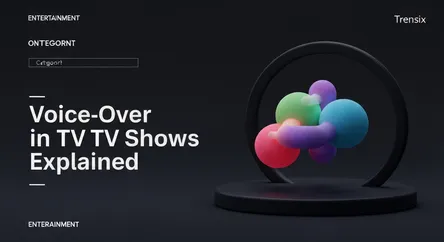Entertainment
Voice-Over in TV Shows Explained

Discover the art of voice-over (VO) in television. Learn how narration shapes storytelling, creates atmosphere, and connects viewers to characters.
What Is It?
Voice-over, often abbreviated as VO, is a production technique where a voice that is not part of the on-screen narrative is used in a television show. This non-diegetic sound is typically used to provide context or a character's internal thoughts. It can be an omniscient narrator explaining events, a character reflecting on their past, or even a documentary-style commentary. Iconic examples range from the adult Kevin Arnold in The Wonder Years to the menacing inner monologue of Joe Goldberg in You.
Why Is It Trending?
Voice-over is a timeless and versatile storytelling tool that remains popular for its effectiveness. It's a powerful way to deliver exposition without slowing down the plot, offer unique comedic or dramatic insights, and build a specific tone. In an era of complex, binge-worthy narratives, VO allows creators to clarify intricate plot points and delve deep into a character's psyche, making shows like Fleabag or Mr. Robot more immersive. Its consistent use in popular reality TV and documentaries also keeps the technique in the mainstream.
How Does It Affect People?
VO fundamentally shapes the audience's experience and interpretation of a show. It can forge an intimate bond between the viewer and a character by giving direct access to their unfiltered thoughts and feelings. This narrative guidance can build suspense, add layers of irony, or evoke nostalgia. A well-executed voice-over becomes an integral part of a show's identity, influencing how audiences perceive the story and often becoming one of its most memorable elements, deeply embedding the narrator's voice in pop culture.